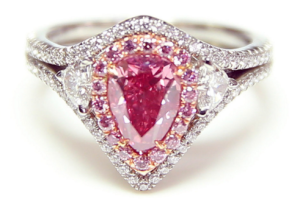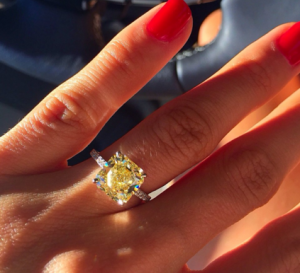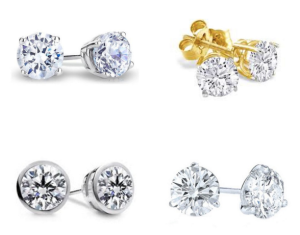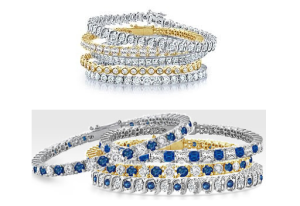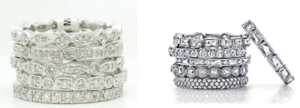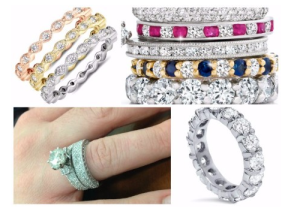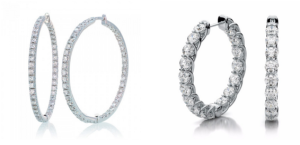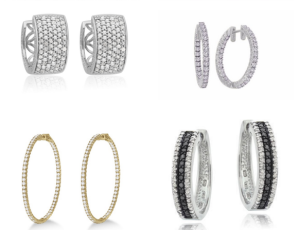Craftsmanship in the GIA Diamond Cut Grading System: Evaluating Finish in Standard Round Brilliant Diamonds
In the Gemological Institute of America (GIA) Diamond Cut Grading System for standard round brilliant diamonds, the aspect of craftsmanship — i.e., the care that went into the crafting of a polished diamond, as seen in its finish — plays an important role in the overall cut grade along with the other aspects of face-up appearance and design (see figure 1). The two categories that define finish — polish and symmetry — have been part of GIA’s International Diamond Grading System™ since its inception in the mid-1950s and are listed on each GIA Diamond Grading Report and Diamond Dossier®. It is important to note that with the introduction of the new cut grading system, the criteria for determining polish and symmetry remain the same.The following is a review of the criteria and the methods used for assessing them,and will explain their role in the new cut grading system.This article expands on the GIA’s course material for assessing polish and symmetry, describes the guidelines used by the GIA Laboratory in evaluating finish and presents specific examples of the different polish and symmetry categories. In the GIA Diamond Grading System,“polish”refers to the quality of a diamond’s surface condition as a result of the polishing process (see figure 2) or to blemishes created after the cutting process, often referred to as “wear and tear” (see figure 3). Polish features are located on the surface and do not visibly penetrate into the diamond at 10X magnification. Polish is assessed on a scale consisting of excellent, very good, good, fair and poor. “Symmetry” refers to the exactness of the shape of a diamond,and the symmetrical arrangement and even placement of the facets (see figure 4). Symmetry is also assessed on a scale ranging from excellent to poor. In the GIA Diamond Cut Grading System for standard round brilliant diamonds,on the GIA D-to-Z color scale and Flawless-to-I3 clarity scale, finish is factored into the final overall cut grade as follows:
• To qualify for an excellent cut grade,both polish and symmetry must be very good or excellent.
• To qualify for a very good cut grade,both polish and symmetry must be at least good.
• To qualify for a good cut grade,both polish and symmetry must be at least fair.
• To qualify for a fair cut grade,both polish and symmetry must be at least fair.
• A poor cut grade is assigned when either polish or symmetry is poor.
To determine the relationship between finish and overall cut quality, GIA conducted extensive observation testing using standardized lighting and viewing conditions. Observations of diamonds with comparable proportions, but differing in their polish and symmetry categories,were analyzed to determine the effects of finish on overall cut appearance. In this way, GIA researchers found that a one grade difference between the other aspects of a diamond’s cut grade and its polish and symmetry assessments did not significantly lower a trained observer’s assessment of faceup appearance,and could not be discerned reliably with the unaided eye — e.g., polish and/or symmetry descriptions of very good did not cause observers to lower their assessment of a diamond that would otherwise receive an overall cut grade of excellent.
POLISH A number of features are considered in the evaluation of polish. Examples and definitions of these are provided in table 1,Polish Features,on page 83. Diamond graders consider the amount and visibility of the polish features present. The general appearances of GIA’s five polish categories are described here.
Excellent: ranges from no polish features to a few minute polish features that can be viewed with difficulty face-up at 10X magnification.* Very Good: minor polish features are seen face-up at 10X magnification.
Very Good: minor polish features are seen face-up at 10X magnification.
Good: noticeable polish features are seen face-up at 10X magnification. The luster of the diamond may be affected when viewed with the unaided eye.
Fair: obvious heavy polish features are seen face-up at 10X magnification. The luster of the diamond is affected when viewed with the unaided eye.
Poor: prominent heavy polish features are seen faceup at 10X magnification. The luster of the diamond is significantly affected when viewed with the unaided eye.
As with all other aspects of diamond grading, standard methodology and a controlled environment are used to evaluate polish consistently, with the final determination based on an objective consensus of independent grader opinions. The following steps are performed at 10X magnification with either a fully corrected loupe or gemological microscope under darkfield illumination to assess the polish:
• The diamond is first examined face-up,girdle-to-girdle to gain an initial impression of the polish.
• The diamond is then examined one section at a time, through both the crown and pavilion, to locate and identify the specific polish features present.
• The diamond is again examined face-up,girdle-to-girdle, and this time viewed in at least four different positions with a loupe; some features may be more or less apparent depending on the orientation of the diamond.
• A visual polish description is assigned that considers the diamond’s overall face-up appearance as well as polish features seen in any view. Emphasis is placed on the diamond’s face-up appearance with a 10X loupe.
SYMMETRY As with polish, a number of features are considered in the evaluation of symmetry;these are defined and illustrated in tables 2 and 3 on pages 84-85. Symmetry features can be subdivided into two categories:proportion related (see table 2,Proportion-Related Symmetry Features) and facet related (see table 3, Facet-Related Symmetry Features). Due to a polished diamond’s three-dimensional nature,the presence of one symmetry feature may result in others.Graders consider the extent and visual appearance of any symmetry features present. The general appearances of GIA’s five symmetry categories are described here:
Excellent: ranges from no symmetry features to minute symmetry features that can be viewed with difficulty face-up at 10X magnification.
Very Good: minor symmetry features are seen faceup at 10X magnification.
Good: noticeable symmetry features are seen face-up at 10X magnification.The diamond’s overall appearance may be affected when viewed with the unaided eye.
Fair: obvious symmetry features are seen face-up at 10X magnification.The diamond’s overall appearance is often affected when viewed with the unaided eye.
Poor: prominent symmetry features are seen face-up at 10X magnification.The diamond’s overall appearance is significantly affected when viewed with the unaided eye.
The following steps are performed at 10X magnification with either a fully corrected loupe or gemological microscope under darkfield illumination to determine the symmetry of a polished diamond.Again, the final result is an objective consensus of independent grader opinions. • The diamond is first examined face-up,girdle-to-girdle in order to gain an initial impression of the symmetry. • The diamond is then rotated in profile view to reveal any symmetry features that are best seen in this position — such as non-pointing,misalignment,wavy girdle, girdle thickness variation,table and girdle not parallel, crown angle variation and pavilion angle variation. • The diamond is again examined face-up,girdle-to-girdle, and this time viewed in at least four different positions with a loupe;some features may be more or less apparent depending on the orientation of the diamond. • A visual symmetry description is assigned that considers the diamond’s face-up appearance as well as symmetry features seen in profile view.Emphasis is placed on the diamond’s face-up appearance with a 10X loupe.
Table 4,Examples of GIA Polish Categories,page 86,and table 5, Examples of GIA Symmetry Categories, page 87, provide examples and typical grade-setting characteristics for each polish and symmetry category using the established methods of the GIA Laboratory.
CONCLUSION The aspect of craftsmanship has always been part of GIA’s International Diamond Grading System as it is practiced in the GIA Laboratory and taught in GIA’s educational courses.
Thank you to the Rapaport Diamond Report for this article.
A unique, personal jeweler who works nationwide, Keith Saxe is GIA and FIT trained and has been a trusted high end diamond jewelry specialist for 27 years. He is the founder and president of NYC Wholesale Diamonds located at 47 West 47th Street Suite 3A in the New York City Diamond District. His website is www.NYCWD.com and he authors a blog www.NYCDiamondBlog.com. Keith has recently been named to The Diamond Council of America, is a member of the Jewelers Board of Trade, and Jewelers of America. He offers GIA Certified Ideal Cut Diamonds, and state of the art fine jewelry designs at low wholesale prices. Keith has been named the N.Y. Diamond District’s Favorite Jeweler by the N.Y. Post’s Savvy Shopper column, had his diamond education articles published, been recommended in the New York Times, national gift reporter Robyn Spizman’s ‘Perfect Present Guide’ and ‘The GIFTionary’, as well as having his Diamond Halo Engagement Ring design featured on ‘The Knot.’




